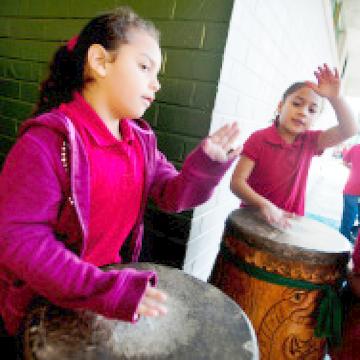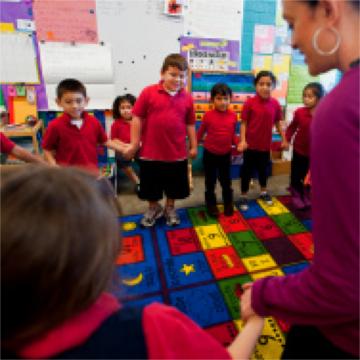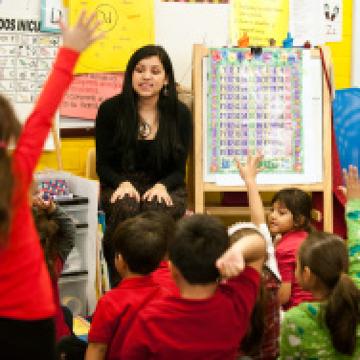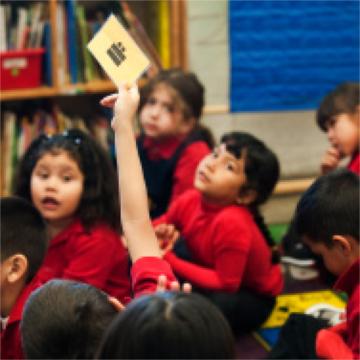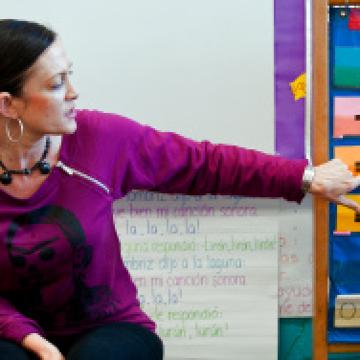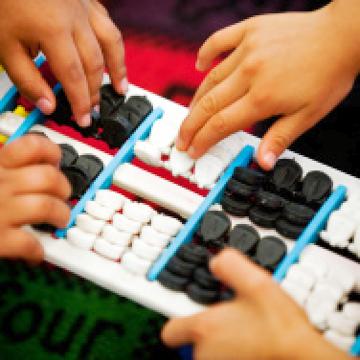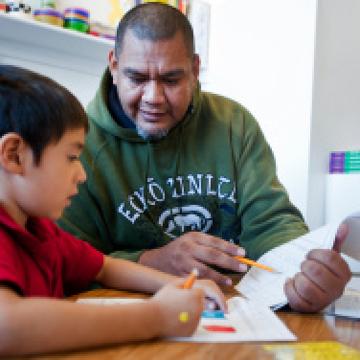 |
Canku Ota
|
 |
|
(Many Paths)
|
||
|
An Online Newsletter
Celebrating Native America
|
||
|
December 2015 - Volume
13 Number 12
|
||
|
|
||
|
How An El Sereno
Charter School Fought For (and won) The Right To Teach In An Indigenous
Language
|
||
|
by Deepa Fernandes -
Off-Ramp 89.3 KPCC-FM
|
||
|
credits: photos by Maya
Sugarman - 89. 3 KPCC-FM
|
On a main thoroughfare in East Los Angeles, there's a brightly painted public school: Anahuacalmecac International Preparatory High School, part of the Semillas school network. Semillas — Spanish for "seeds" — teaches teenagers about their indigenous roots and culture. Students there learn in Spanish and Nahuatl, incorporating Mayan mathematics and indigenous visual and performing arts. One course teaches indigenous diplomacy and youth leadership skills. Parents and grandparents are integrated into the student's learning. It's not unusual in California for public school students to spend a good portion of their day studying math or science or any subject in a language other than English. But this little Los Angeles charter school is the only one that teaches in an indigenous language. Principal Marcos Aguilar co-founded the indigenous charter school in 2001 to better serve kids in the El Sereno neighborhood of Los Angeles, many of whom have indigenous roots. "We're not visitors here," he said. "We've been here for millennia, and its important for our children to grow knowing what our ancestors named the places around us many many years ago." Kids learn indigenous history. Aguilar said the concepts of community and collectivism that are deeply rooted in native culture are at the core of the school.
"We believe that our children should be able to receive an education that strengthens and fosters our culture as well as educates them to deal with the economy and the politics of the world that they will grow up into," he said. The school gets results. Last year, Semillas graduated 100 percent of its senior class, with 80 percent going on to four-year college, according to Aguilar. But in June 2013, when the school's charter license was before the Los Angeles Unified School District board for renewal, it was denied. Director of Charter Schools for L.A. Unified, Jose Cole-Gutierrez, noted "serious concerns" with the school's academic performance and fiscal viability. "We noted that in the year prior to this last year the school dropped over 150 points on the Academic Performance Index," he said. "There were financial concerns that were severe, that also spoke to concerns to governance." The school countered that its API score put it in the middle of all schools in the state — far from a failing school. It added that other public schools in the area had worse test scores and were not graduating seniors onto college at the rate Semillas was, yet the district was not closing them down. The school also pointed to its Western Association of Schools and Colleges accreditation, a rigorous evaluation by an esteemed educational institution. Semillas is also an official International Baccalaureate school, another process that requires high academic standards. In short, teachers at Semillas didn't spend time teaching to tests. They used independent projects and UC college-approved courses to measure student progress.
The fiscal issue the district raised was a budget shortfall of half a million dollars. The school got a grant to cover it, but none of this was enough for district officials who reiterated concerns about governance and transparency. But parents, teachers and supporters believed the district simply had a beef with the school, and that beef was political. Few expected what came next: Principal Aguilar, dressed in a traditional Aztec feathered headdress, addressed the local board in defense of his school. "We invoke the U.N. Declaration on the Rights of Indigenous Peoples as we call on the board of education to recognize holistic academic excellence and the strong community roots that Semillas represents, and we ask you to renew the charter of Anahuacalmecac," he said. Outraged parents and teachers had begun organizing. Mothers' meetings were held at the school to strategize. Students, shocked by the local school board's decision, stepped up to speak out at protests that they themselves organized. "We are here to let everyone know that ... Anahuacalmecac is our sacred house of learning, and we are going to defend it with everything we have for the future generations to come," said senior Natalie Carillo.
She was addressing a rally at Cal State LA ahead of the school's first appeal, which would be to the LA County Office of Education. "Stand us as we defend our education," Carillo said. "We will not let anyone block our road to college." At the appeal hearing, the school mobilized hundreds of supporters to attend and speak out. Including an Aztec elder who addressed the board members in Nahuatl. The LACOE board was split in its vote, which meant it took no action. There would be no charter license renewal, and the only option left to the school was an appeal to the California Department of Education. It was a soul-searching moment. And then, said Principal Aguilar, students made an appeal. "The students organized a town hall and … their message to us [was] to not give up, to defend the school and to stay in the community because they believed in it, they believed in the mission and they wanted to graduate from Semillas." The students stepped up the organizing and began using social media and multimedia. They created little music viral videos. The fight took up much of the academic year, and between organizing, students continued academic work at their sister high school that operated under Semillas' other charter school license.
Meanwhile, the school's legal team worked on its final appeal — kind of the equivalent of David taking his case against Goliath all the way to the Supreme Court. The focus remained on the school's well-rounded academic performance and college acceptance rate, and the school's unique model of indigenous education. And against the odds, in May of this year, all 10 board members of the California State Board of Education voted yes to reinstate the charter license of Anahuacalmecac high school. Board members said they wanted to come and see the school's indigenous education model in action. Board member Carl Cohen said the school was a model. "This looks like a school that is making a difference in a very diverse state," he said. "We are a big state and we should be able to handle some schools that are outside the box." The California Charter School Association said winning at the highest level for a charter school has only happened twice in the past 5 years. Students and staff, buoyed by the organizing victory, are back at work this year. It will be a momentous graduation moment come June, adds Principal Aguilar, because the original kindergarten class that started in 2002 when the school first opened will be the graduating senior class. They almost didn't have a school to graduate from.
|
||||||||||||||||||||||||||||
|
|
|
|
||
|
|
||
| Canku Ota is a free Newsletter celebrating Native America, its traditions and accomplishments . We do not provide subscriber or visitor names to anyone. Some articles presented in Canku Ota may contain copyright material. We have received appropriate permissions for republishing any articles. Material appearing here is distributed without profit or monetary gain to those who have expressed an interest. This is in accordance with Title 17 U.S.C. Section 107. | ||
|
Canku Ota is a copyright ©
2000 - 2015 of Vicki Williams Barry and Paul Barry.
|
||
 |
 |
|
|
The "Canku
Ota - A Newsletter Celebrating Native America" web site and
its design is the
|
||
|
Copyright ©
1999 - 2015 of Paul C. Barry.
|
||
|
All Rights Reserved.
|
||
